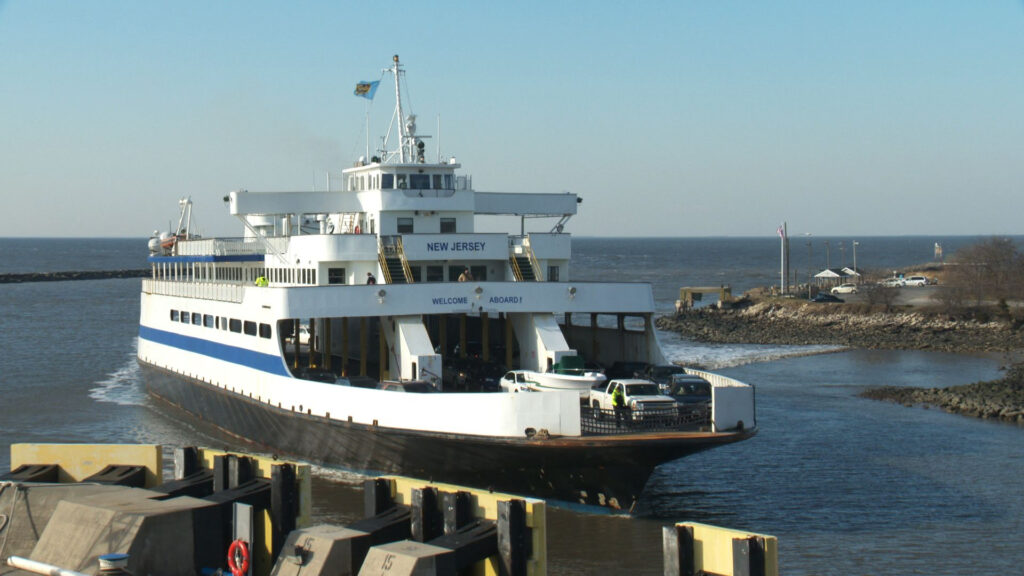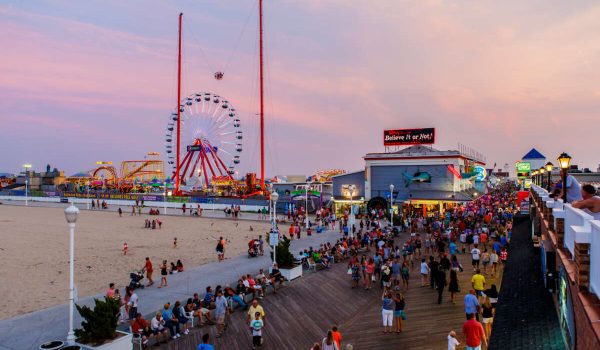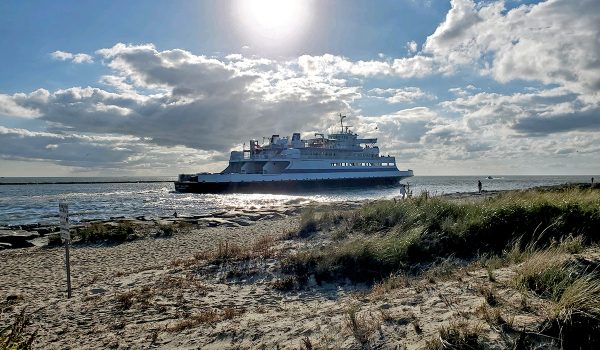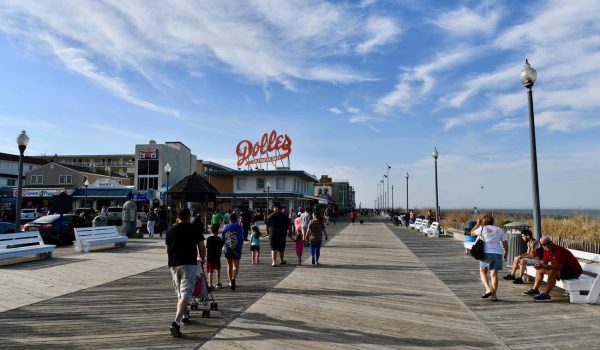A Closer Look at the M/V New Jersey’s Winter Transformation
During the height of summer, the Ferry operates upwards of twelve departures per day from each terminal, utilizing all three of our vessels, the M/V New Jersey, the M/V Delaware, and the M/V Cape Henlopen. If you’ve traveled with us this winter, however, you might have noticed that the M/V New Jersey has been absent from the line-up. If you’re wondering why that is…
She’s currently at the shipyard, undergoing a top-to-bottom transformation, including repowering, repainting, and re-engineering down to her framework and bulkhead steel. To put it in other terms, this is the ship’s equivalent of being taken down to the studs and rebuilt.
When the M/V NJ returns this spring she’ll look fresh and clean, but we wanted to give you a behind-the-scenes look at just how much work has been – and continues to be – done, both inside and outside to make that happen. Special thanks to our Assistant Port Engineer, Mike Lynch, for all the photos, and to our Port Engineer, Jeff Robert, for the details.
Way More Than Just a Fresh Coat of Paint
Let’s start our journey with a point of reference; here’s the M/V NJ arriving at the Shipyard back in November, looking fairly reminiscent of the last time she carried passengers across the Bay.
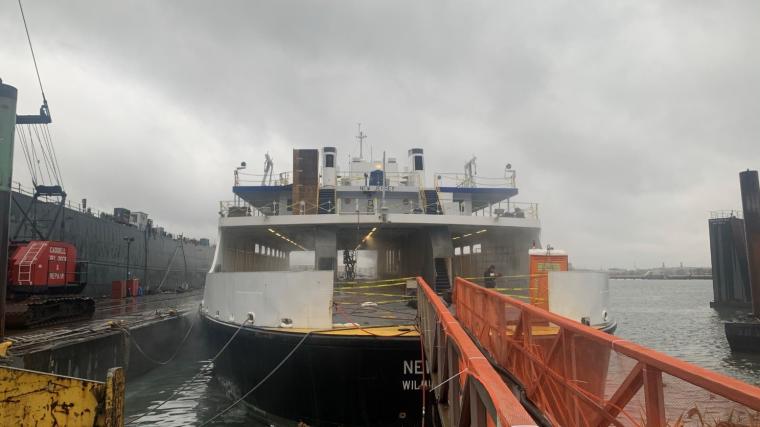
However, upon arrival, things changed quickly. Once at the shipyard, it was all about removal; stripping the paint, removing parts, and taking things down to the framework.
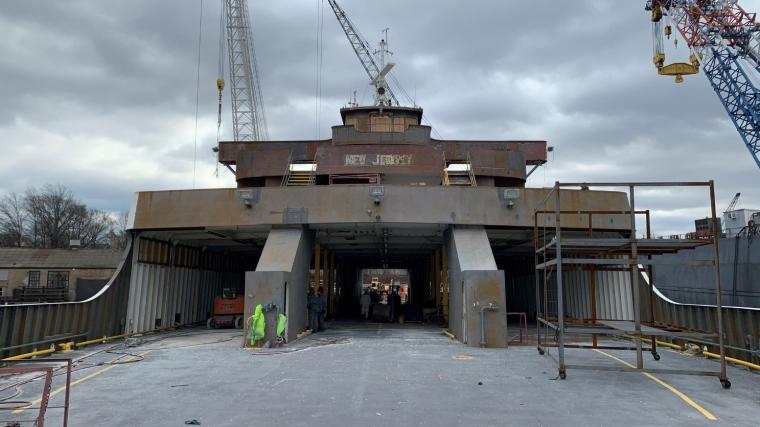
Above, you see the M/V NJ from the car deck, stripped of its usual white paint. Below, a view of hull in the process of having the paint blasted off and removed.
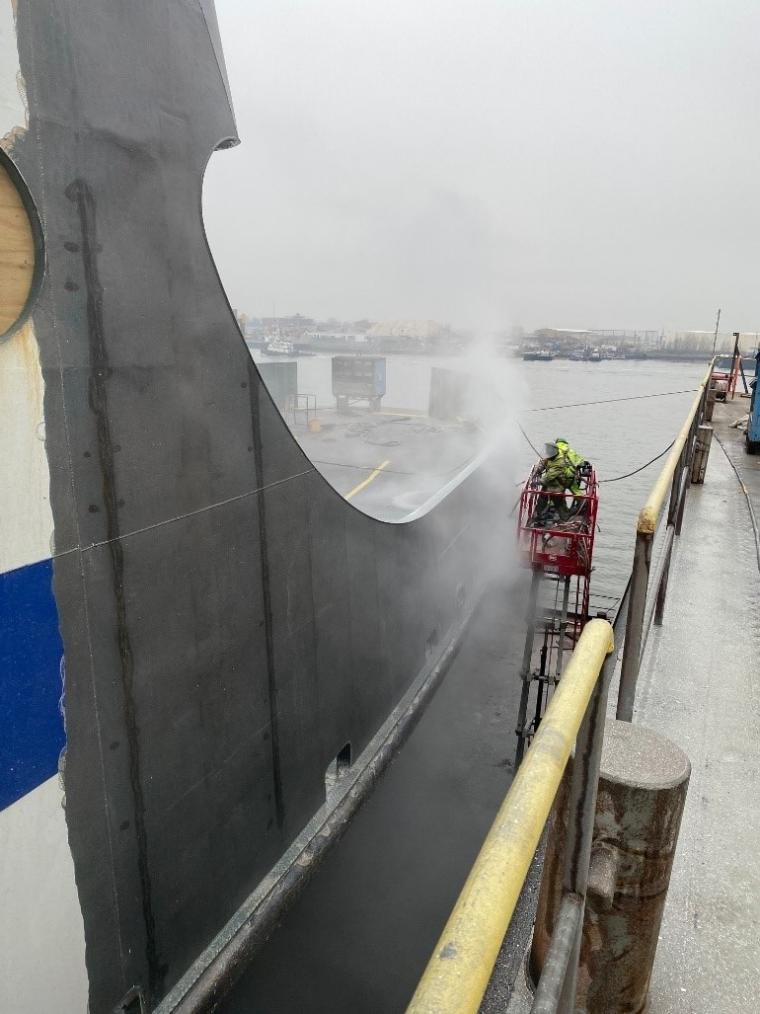
Up on the top deck, the Lido Bar and Pilot’s house were stripped down to the metal, as well as all decking and seating removed. A far cry from where you had that last Orange Crush, right? But don’t worry, the Lido Bar will be back and better than ever in time for you to kick back and enjoy one this summer.
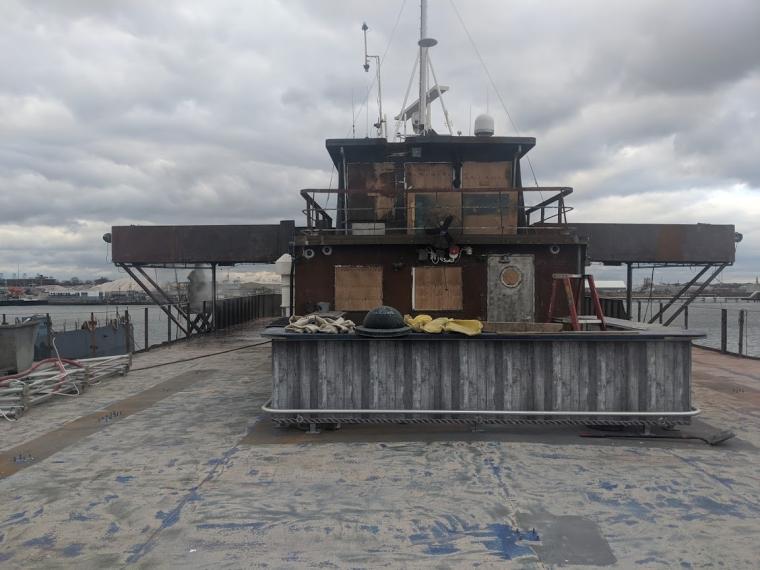
But as mentioned, this isn’t just an exterior project; it was also time to remove some pretty massive components of the vessel, including the Fairbanks Morse diesel engine, old mufflers, ballast and anchor chains, and ship stacks.
Fairbanks Morse Engine being trucked away:
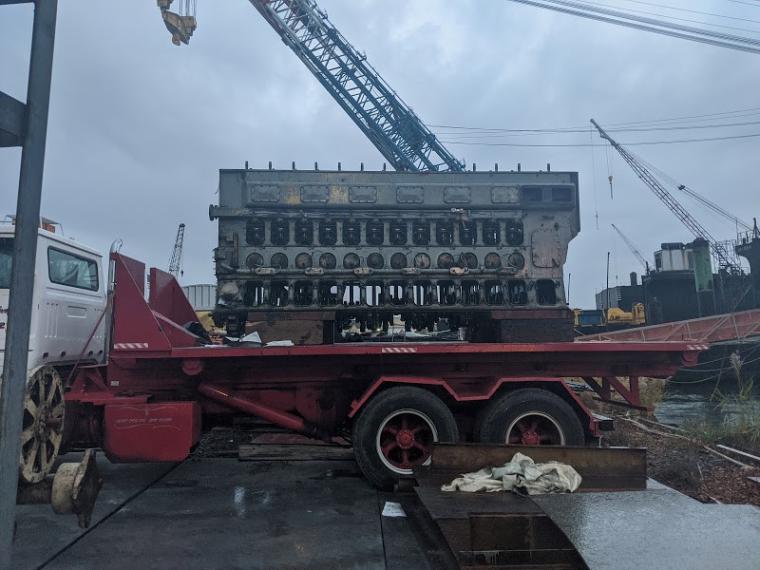
Old mufflers being removed:
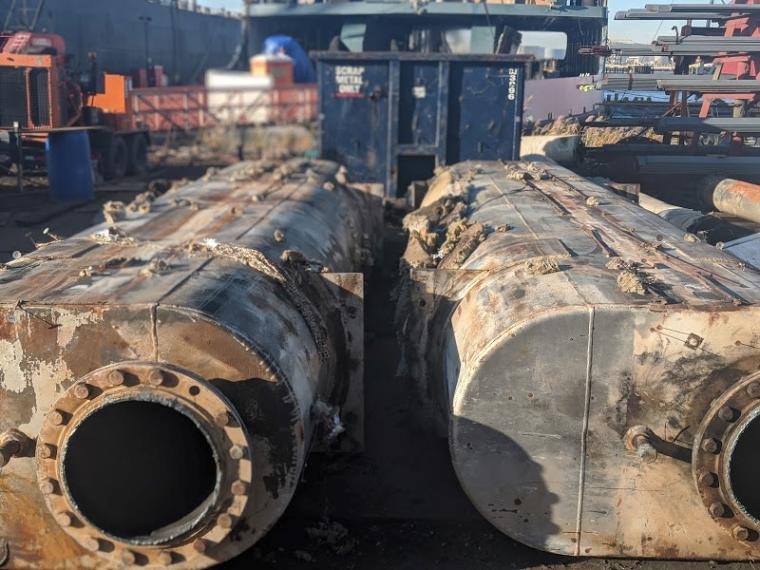
Ballast and anchor chains removed:
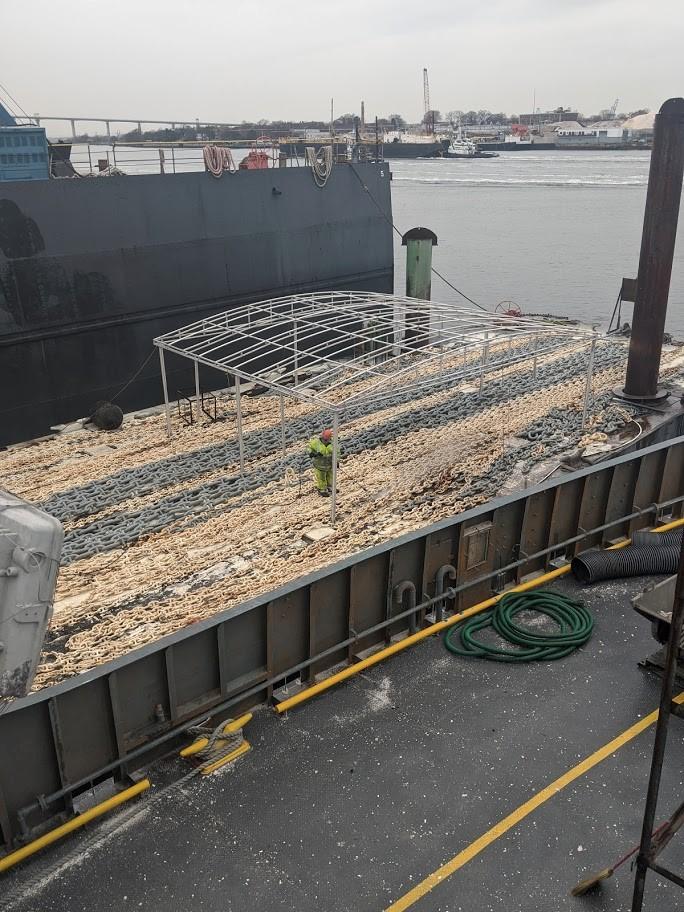
The ship stacks were also removed. Below you see the new ship stacks that are being fabricated landside, to be installed after the new mufflers go in:
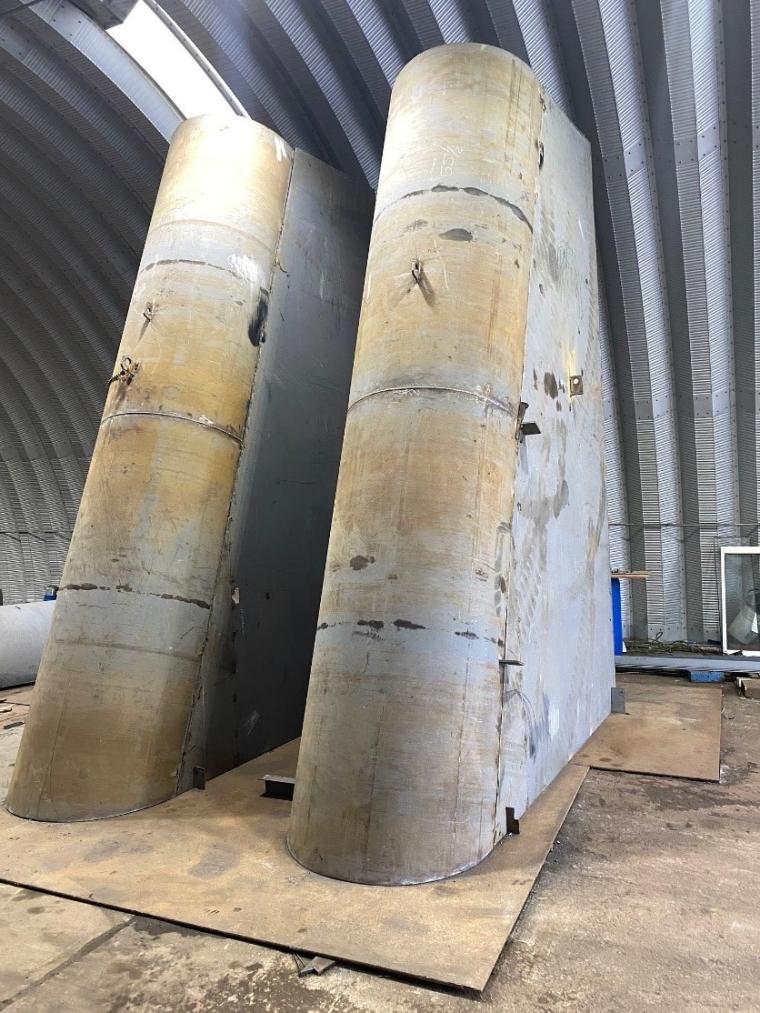
A Different View
So after all that removal, what does a vessel taken down to the studs actually look like? Great question! Thanks to Assistant Port Engineer Lynch, we can show you.
Here’s a look at the engine room, stripped down:

And, a look at the interior salon, which – as you can tell – looks just a bit different than the last time it had passengers in it:
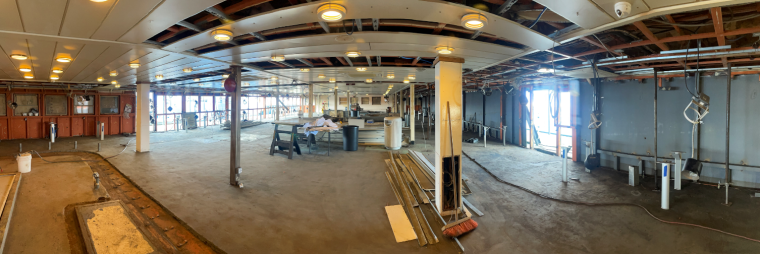
Another view of the salon, taken down to the studs. For reference, this is typically where you’d see tables, windows, and be able to walk out to the exterior deck.
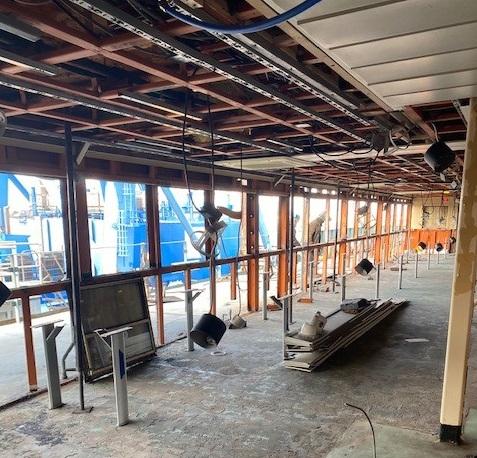
Channel Your Inner Bob Ross, It’s Time To Paint!
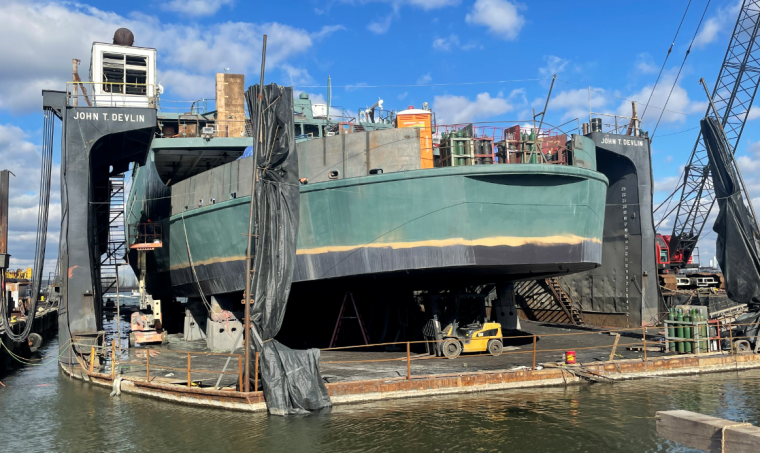
Though, this job is a lot less about happy little trees and a lot more about zinc primer and anti-foul paint. In fact, there are quite a few things unique to repainting a vessel like the M/V NJ.
In the photo above of the vessel in dry dock, you can see examples of the many different layers that keep a boat waterproof and looking good at the same time.
- The top layer of gray on the car deck shows what bare blasted steel looks like. There is no paint on this layer.
- The green section shows a layer of zinc primer which helps prevent corrosion.
- Two additional coats of primer will applied over the zinc primer as the project is closer to the end.
- After the three coats of primer, a black top coat will be applied.
- The thin beige section shows the second coat of primer for the underwater hull.
- The black on the bottom is the first of three full coats of anti-foul paint that keeps barnacles off the bottom of the boat. The next coats will be red and then blue.
As the next layers of coatings are applied, the hull markings will be painted and the final detail added to ensure crisp lines.
Up Next…. The Rebuild
Now that we’ve taken things down, the M/V NJ needs to be rebuilt (We have the technology. We can rebuild her, better and stronger than before.)

